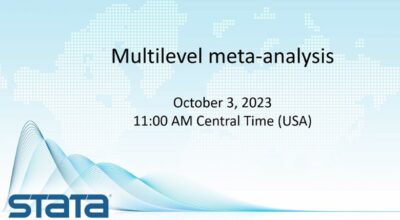Familiarization of students of the educational programs “Economic Cybernetics and Business Analytics” and “Economic Cybernetics” with modern statistical analysis software is important and is one of the key elements of their successful training and future career.
One of the modern software products is Stata, a powerful package for processing statistical and graphical data.
The Stata package is positioned as an analysis tool designed for professionals engaged in scientific research. Due to its flexible modular structure, the package can be used to analyze data from various fields of knowledge: social sciences (economics, political science), medicine (biostatistics, epidemiology), etc. Stata provides users with the following statistical data analysis capabilities: dynamic factor models, linear, generalized linear, and nonlinear models, multilevel mixed models, attrition models; generalized equation estimators (GEE); nonparametric methods, resampling methods, and statistical experimentation; hypothesis testing and working with estimated models; maximizing user-defined likelihood functions; matrix commands.
On October 3, as part of the discipline “Big-data and cloud technologies in economics”, students of the group EC 01a/2 took part in an open webinar on using the Stata package for statistical analysis.
The webinar was organized by Stata Corp LLC. During the webinar, the following issues were discussed
– Standard meta-analysis
– Multilevel meta-analysis
– Fit a randomized intercept model
– Fit a randomized slope model
– Assess heterogeneity at different levels
– Perform sensitivity analysis
The webinar was attended by teachers of the Department of Economic Cybernetics and students of groups EK 01a/2, EKm-31, EKm-21.
Stata is a powerful tool for data analysis and statistical computing. Studying the program will help students to perform various statistical operations, build models and conduct data analytics, which are key aspects of business intelligence. Stata provides tools for building various models, including regression analysis, time series, and others. This helps students develop forecasts and models for business decision-making. Many jobs in business analytics require knowledge of Stata. Familiarization with this program can significantly increase students’ competitiveness in the labor market and open up new career opportunities.
